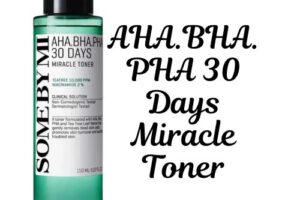Understanding All about Skin Purging
When starting a new skincare routine or trying a new product, many people experience an increase in pimples or irritation. This can lead to the common misconception that “your skin gets worse before it gets better.” However, it’s crucial to understand that not all breakouts are the same. The difference between purging and regular breakouts lies in their cause, timing, and how your skin responds. Misunderstanding these distinctions can lead to unnecessary panic and improper treatment. In this article, we’ll break down how to tell if your skin is simply purging or if you’re dealing with a breakout, helping you avoid confusion and better navigate your skincare journey.
Duration of Skin Purging
Skin purging usually starts within one to four weeks of using a new product, especially those containing active ingredients like retinoids or exfoliating acids. This phase can last anywhere from two to eight weeks as your skin adjusts.
If you’re managing a lot of closed comedones (those small, under-the-skin bumps), the purging process might feel more intense at first, as these clogged pores make their way to the surface. While it’s tempting to stop using the product, staying consistent can pay off as your skin clears, revealing a smoother, brighter complexion.
What Causes Skin Purging?
Skin purging happens when certain active ingredients increase cell turnover, bringing underlying impurities to the surface faster than usual. This can initially lead to breakouts, but it’s a temporary phase on the way to clearer skin. Here’s a closer look at the key ingredients that often trigger purging:
- Retinoids (e.g., retinol, retinoic acid): Known for their powerful anti-aging and acne-fighting benefits, retinoids speed up cell renewal, which can push trapped oils and debris to the surface.
- AHAs and BHAs (e.g., glycolic acid, salicylic acid): These exfoliating acids penetrate the skin to unclog pores and clear dead cells, a process that may cause breakouts before improvement.
- Acne Treatments (e.g., benzoyl peroxide): Benzoyl peroxide targets acne-causing bacteria but can also increase skin turnover, potentially bringing blemishes to the surface initially.
While these ingredients are effective for long-term skin clarity, purging is simply a phase where blocked pores are being cleared out, making way for smoother, healthier skin ahead.
Understanding Skin Purging vs. Irritation
| Skin Purging | Skin Irritation |
|---|---|
| Where it Appears: Usually in areas prone to breakouts, such as the T-zone or cheeks. | Where it Appears: Can happen anywhere, often widespread on the face. |
| Cause: Ingredients like retinoids, AHAs, and BHAs bring underlying clogged pores to the surface, speeding up the skin cell turnover. | Cause: A reaction to a new product or ingredient that may disrupt the skin barrier, leading to redness and discomfort. |
| Duration: Often resolves within 2-8 weeks as the skin adjusts to the active ingredients. | Duration: Can improve over time but may need barrier-repair products for comfort; persistent irritation might mean the product isn’t suitable. |
How to Differentiate Purging from Regular Breakouts
- Purging: Typically happens soon after starting a new product with active ingredients (e.g., retinoids or exfoliating acids) and follows a somewhat predictable pattern. It should lessen as your skin acclimates.
- Breakouts: Random in nature and may not improve with continued use of the product. Persistent breakouts could signal that the product is too harsh or incompatible with your skin.
Managing and Calming Purging Breakouts
When introducing new active ingredients, like retinoids, it’s essential to go slow to help your skin adjust without overwhelming it. Start with a low frequency, such as 1-2 times per week, and gradually increase as your skin tolerates it. This can reduce the intensity of any purging phase.
To further calm the skin, pair these actives with soothing ingredients like niacinamide, which helps reduce inflammation and supports the skin barrier. It’s also wise to stick to gentle, non-comedogenic products. Opt for hydrating cleansers that cleanse without stripping and basic moisturizers that hydrate without clogging pores. This balanced approach keeps skin hydrated and resilient, helping you manage any purging effects more comfortably.
Tips for a Smooth Transition
To make the process easier on your skin, avoid overloading your routine with too many new products at once. Introduce new ingredients slowly and one at a time, allowing your skin to adjust without being overwhelmed.
During this time, focus on using soothing, non-irritating products that help support and strengthen your skin barrier. Gentle moisturizers, calming serums, and hydrating cleansers can keep your skin balanced and calm.
Lastly, be patient and consistent. While it might feel frustrating at first, purging is temporary, and sticking with your routine will often lead to clearer, smoother skin. Over time, the initial breakouts will subside, and you’ll likely see improved texture and a healthier complexion.














Post Comment